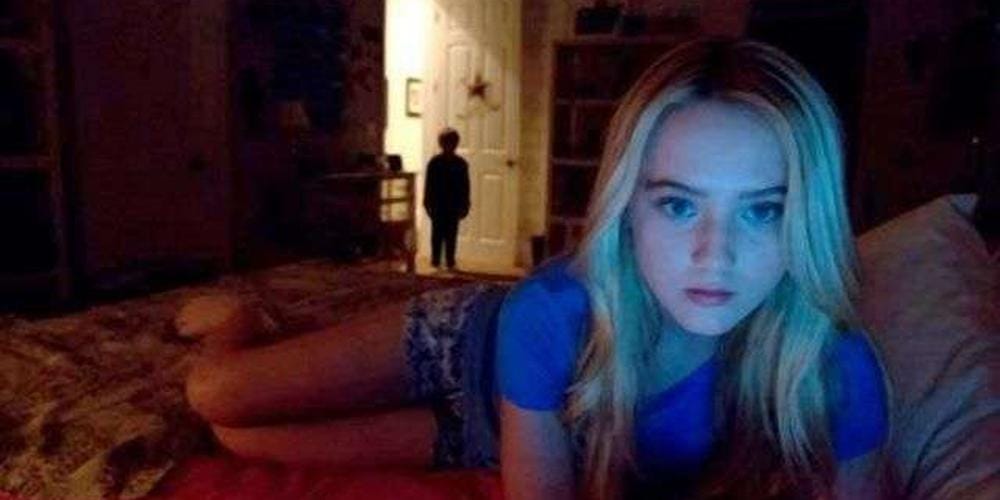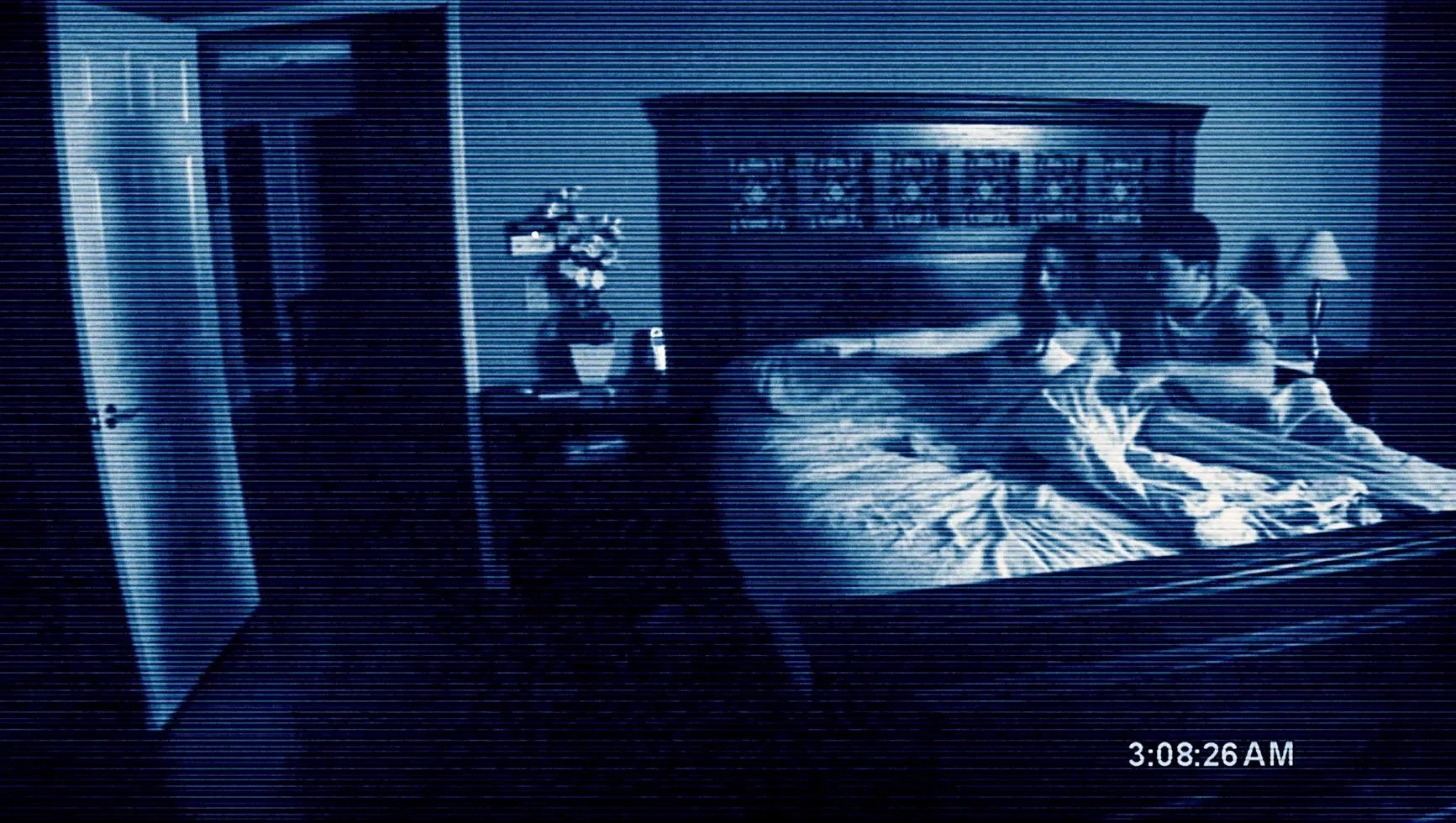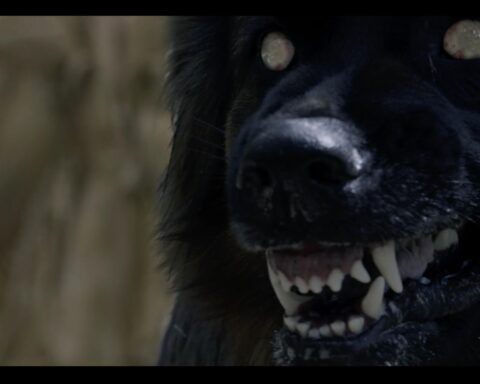Released in 2007, Paranormal Activity emerged as an unexpected juggernaut in the horror film industry, capturing audience imaginations with its “found footage” style and minimalistic, highly atmospheric scares. Initially a low-budget indie production, the first film’s success spawned a franchise that would stretch across several sequels, each expanding on the story’s mythology and delving deeper into its horror universe.
Across its various installments, Paranormal Activity introduced fans to a creeping dread rooted in the supernatural and familiar domestic spaces, exploring demonic entities, familial curses, and dark rituals. This article examines each film in the saga, explores how they interconnect, dissects the genre elements that defined it, and discusses its broader impact on the horror genre and popular culture.

A Journey Through Horror Found Footage
1. Paranormal Activity (2007)
The franchise begins with Paranormal Activity, directed by Oren Peli, which introduces audiences to Katie Featherston and her boyfriend, Micah. The couple moves into a new home in San Diego, but strange occurrences, primarily around Katie, suggest a supernatural presence. Micah sets up a camera to document these events, creating the film’s “found footage” style. The daytime scenes are calm and uneventful, while the nights increasingly reveal mysterious, disturbing activity: doors moving on their own, footsteps echoing through the hallways, and eventually, the unsettling sight of Katie standing beside the bed, seemingly in a trance.
Katie reveals that she has been haunted by an unknown entity since childhood, and as Micah digs deeper, it becomes clear that the spirit is not merely a haunting but an actively malevolent force. The film builds to a chilling climax where Katie, fully possessed, murders Micah. This final, violent act establishes a tone of fatalistic horror, suggesting that the haunting is far more powerful and sinister than anyone suspected. The film ends ambiguously, with Katie disappearing, setting the stage for future revelations in the series.
2. Paranormal Activity 2 (2010)
Paranormal Activity 2 serves as both a prequel and a parallel story to the events of the first film. It centers on Katie’s sister, Kristi, her husband Dan, and their teenage daughter, Ali. The couple has recently welcomed a baby boy, Hunter, and the story quickly suggests that Hunter is a focal point for the supernatural disturbances. Shortly after bringing him home, strange events begin to unfold, from objects inexplicably moving to loud, unsettling noises during the night.
As in the first film, the story is told through security cameras Dan installs around the house, capturing subtle but disturbing phenomena that escalate in intensity. Through Ali’s investigation, the family learns of a demonic curse tied to their maternal line, with Hunter seemingly intended as a ritualistic sacrifice or offering. The movie concludes with Katie, possessed and inhumanly powerful, murdering Dan and taking Hunter with her. This tragic ending solidifies the connection to the first film and provides an origin for Katie’s descent into possession, as well as her fixation on Hunter, setting the stage for future installments.
3. Paranormal Activity 3 (2011)
The third film shifts even further back, exploring the origin of the demonic attachment to Katie and Kristi. Set in 1988, Paranormal Activity 3 depicts the girls’ early encounters with the entity, whom young Kristi refers to as “Tobi.” Directed by Henry Joost and Ariel Schulman, this prequel reveals a family home plagued by increasingly sinister events, from household items moving on their own to deeply unnerving interactions between Tobi and the girls.
Their mother, Julie, and her boyfriend, Dennis, attempt to understand the phenomena, with Dennis installing cameras around the house. As the story progresses, Dennis discovers evidence suggesting a deeper link between the family and a mysterious coven. It is ultimately revealed that the girls’ grandmother, Lois, is involved with this coven, which worships a demonic entity. The film ends in a chilling, violent climax in which the grandmother, Lois, orchestrates a ritual, reinforcing that the girls are being prepared for a life-long connection to Tobi. This installment adds significant depth to the franchise’s mythology, hinting that the girls are being raised as part of an intergenerational pact with a demonic force.
4. Paranormal Activity 4 (2012)

Set after the events of the first two films, Paranormal Activity 4 introduces a new family living in a suburban neighborhood. Directed by Joost and Schulman again, this installment follows teenager Alex and her adopted brother, Wyatt. They begin experiencing strange occurrences after a mysterious neighbor, Katie, and her young son, Robbie, move into the neighborhood. Katie, fully possessed and dangerous, brings with her the malevolent entity, extending its influence to Alex’s family.
Throughout the movie, it’s revealed that Wyatt is actually Hunter, the child Katie took at the end of Paranormal Activity 2. Katie, using Robbie as a proxy, is attempting to reclaim him. The story escalates as Alex’s family falls victim to the same terrifying phenomena and demonic manipulation that plagued Katie’s. By the end, Alex and her family are overpowered, leaving the demonic forces free to continue their plans with Hunter/Wyatt under their control. This installment reinforces the idea of a cursed bloodline and the demon’s unyielding interest in Hunter, who represents the continuation of the curse.
5. Paranormal Activity: The Marked Ones (2014)
In a departure from the main storyline, The Marked Ones explores another dimension of the Paranormal Activity universe by focusing on a Latino community and expanding the demonic mythology. Set in Oxnard, California, this spin-off follows Jesse, a young man who begins experiencing strange occurrences after the death of his neighbor, Anna, who was rumored to be a witch. After Jesse and his friends investigate her apartment, he starts to exhibit signs of demonic influence.
The film introduces the concept of “the marked ones,” people chosen by the demonic coven for possession. It reveals that the same coven tied to Katie and Kristi is conducting rituals across communities, marking certain individuals for possession and ultimate subjugation by the demon. Jesse’s struggles mirror Katie’s in that he loses control over his own body and fate. The film ends with Jesse fully possessed, reinforcing that the coven’s reach is extensive and that the events of the main storyline are part of a much larger network of demonic activity. The Marked Ones provides insight into the coven’s broader reach and hints at a larger, interconnected demonic agenda.
6. Paranormal Activity: The Ghost Dimension (2015)
The Ghost Dimension aims to conclude the saga by bringing the demonic narrative to a head. The film follows a new family, the Fleeges, who discover a camera that can see supernatural phenomena invisible to the naked eye. As they review tapes left by previous residents, they learn more about Tobi, the demon, and his connection to Katie and Kristi. This installment provides visual representation of the demon, showing him as a shadowy, monstrous figure interacting with the human world.
The film attempts to tie up loose ends by explaining Tobi’s ultimate goal: to become fully corporeal. Using the family’s daughter, Leila, as part of a ritual, Tobi seeks to cross fully into the physical realm. The final scenes show Tobi succeeding, establishing that the coven’s centuries-old plan has come to fruition. While critically divisive, The Ghost Dimension serves as the finale to the saga’s main arc, presenting Tobi as an entity that has transcended the barriers between the demonic and human worlds.
7. Paranormal Activity: Next of Kin (2021)

Next of Kin takes a unique approach as a reboot, distancing itself from the original characters and storyline. Set within an isolated Amish community, the film follows Margot, a young woman searching for her roots. She uncovers a new kind of demonic presence, unrelated to Tobi, named Asmodeus, who is linked to the religious practices of the community. The movie offers a fresh take on the familiar Paranormal Activity aesthetic while exploring themes of heritage, identity, and hidden horror within traditional communities.
Though it diverges from the main storyline, Next of Kin preserves the essence of the franchise, capturing supernatural horror in an authentic documentary style and expanding the franchise’s potential for new narratives in fresh settings.
A Genre Defining Franchise
Found Footage Horror and the Franchise’s Unique Style
The Paranormal Activity series stands as a definitive example of the “found footage” horror genre, a style that positions the viewer as a direct observer, seeing events unfold through the lens of the characters’ cameras. This genre had been pioneered by films like The Blair Witch Project (1999), which used the format to convey a raw, immediate sense of fear. However, Paranormal Activity refined this approach, crafting a hyper-realistic experience that drew viewers deeper into the horror.
- Authenticity and Immersive Horror
The first Paranormal Activity film uses a single handheld camera, creating a voyeuristic perspective that makes viewers feel like participants. By positioning the camera statically during the night scenes, director Oren Peli allows tension to build gradually, leaving room for viewers to scrutinize the frame, searching for signs of movement or disturbances. This technique becomes a hallmark of the franchise, transforming mundane settings into places of potential terror. - Minimalism in Horror
The franchise is distinctive for its minimalistic approach: it builds terror through subtle, atmospheric effects rather than elaborate special effects or jump scares. This realism-based horror was rare in a genre increasingly dominated by high-budget productions. Through naturalistic acting, understated effects, and a deliberate pace, Paranormal Activity conveys that horror can be frightening without over-the-top elements, allowing audiences to imagine themselves in similar situations. - Tension through Environmental Control
One of the franchise’s signature techniques is the use of domestic spaces as locations of horror. Bedrooms, kitchens, and children’s rooms, spaces traditionally associated with safety, are rendered terrifying by the presence of the unseen entity. By shifting security cameras’ perspectives and using unconventional angles, the films turn everyday spaces into arenas of suspense, reinforcing the idea that danger can lurk within the home.

Recurrent Themes in the Series
As the franchise developed, it interwove several thematic elements that resonated deeply with audiences, contributing to its cultural and psychological impact.
- The Inescapability of Family Ties and Ancestral Curses
From the second movie onward, the Paranormal Activity series establishes a narrative of generational trauma. Katie and Kristi’s experiences are not isolated; they are bound to an ancestral curse, part of a covenant their maternal lineage made with a demonic entity. This theme speaks to the idea of familial legacies, both figurative and literal, that can haunt and shape individuals’ lives. The concept of an inherited curse resonates on a symbolic level, representing the challenges and burdens passed from one generation to the next. - Demonic Possession and Innocence Lost
The films also repeatedly explore the horror of demonic possession and the loss of innocence, especially through their young characters. Hunter, the child in Paranormal Activity 2, and Leila in The Ghost Dimension, symbolize purity and vulnerability. By targeting children, the series taps into the primal fear of evil corrupting innocence, creating emotional stakes that amplify the terror. The innocence of children juxtaposed with the malevolence of the demon makes the possession sequences feel deeply tragic and haunting. - The Occult and Hidden Malevolence within the Ordinary
Another recurring theme is the pervasive influence of occult forces lurking within seemingly normal family lives. Through the demonic covenant explored in the prequels, the franchise implies that malevolent forces can hide in plain sight, sustained by seemingly innocuous family traditions or hidden rituals. This covert evil challenges the idea that danger is visible or recognizable, suggesting that it can exist within familiar structures, hidden from view.
Cultural Impact and Societal Relevance
Paranormal Activity left a significant impact on both the horror genre and broader culture, resonating with societal anxieties about technology, privacy, and home security.

Impact on the Horror Genre
- Revitalizing Found Footage Horror
While the found footage genre had existed for years, Paranormal Activity injected new life into it by proving that low-budget, high-tension horror could resonate powerfully with audiences. After the success of Paranormal Activity, other horror films adopted similar approaches, including the Insidious and The Conjuring franchises, which blended supernatural horror with domestic settings. The franchise demonstrated that psychological suspense and immersive storytelling could be more effective than elaborate effects, reshaping horror trends for the 2010s. - Marketing and Word-of-Mouth Success
The marketing campaign for Paranormal Activity set a precedent for grassroots promotion. The original film was shown in select theaters, with fans able to “demand” screenings in their cities. This strategy created a sense of exclusivity and community-driven excitement, giving fans a feeling of personal investment in the film’s success. This approach has since influenced marketing for other horror films, with studios using social media, limited screenings, and viral marketing to build anticipation. - Pioneering Horror as a Franchise Opportunity
Paranormal Activity showed that horror could be successfully franchised. With each installment, the series expanded on its mythology, turning isolated supernatural events into a cohesive storyline with recurring characters and lore. This serialization created a more immersive universe, drawing fans who were invested in understanding the franchise’s demonic mythology. Many modern horror franchises, from The Conjuring Universe to Sinister, have adopted this approach, building shared universes with interconnected stories.
Societal and Psychological Themes in the Series

- Anxiety about Privacy and Surveillance
Paranormal Activity reflects societal anxieties about privacy and surveillance, themes that became particularly resonant in the age of personal recording devices and social media. The use of security cameras, webcams, and handheld footage in the films serves as a metaphor for the intrusive presence of surveillance in modern life. The idea that one’s private life can be invaded by an unseen entity mirrors fears about losing control over personal privacy in a hyperconnected world. This theme resonates with a modern audience that is increasingly aware of how personal data and private moments can be accessed, monitored, or even exploited by unseen forces. - Fear of Losing Control over Domestic Spaces
The home is traditionally considered a safe haven, a place of refuge and comfort. Paranormal Activity shatters this notion by transforming familiar domestic settings into scenes of horror. The films suggest that even in the most intimate spaces, one is not safe from supernatural or malevolent forces. This idea taps into a primal fear of invasion—of the unseen crossing the boundary between the public and private realms, turning bedrooms, kitchens, and nurseries into places of vulnerability. - Exploration of Rituals and Occult Practices as Cultural Commentary
The franchise’s revelation that the haunting is connected to an ancient pact with a demonic entity resonates with fears about cultural practices, hidden rituals, and the potential dangers of what lies beneath the surface of family life. By framing the haunting as an intergenerational curse, the series suggests that even the closest bonds, such as those between family members, can carry dark secrets. This dynamic speaks to broader anxieties about the hidden dimensions of the past—ancestral practices, religious rituals, or cultural practices—that may shape our present lives in unseen ways.
Frights Based on Reality

The Paranormal Activity franchise’s blend of realistic horror, interwoven mythologies, and minimalist style has made it a unique and influential phenomenon in modern horror. By exploring intergenerational trauma, themes of innocence lost, and fears around surveillance, the series has tapped into universal fears, making it resonate deeply with audiences worldwide. Each installment added a new layer to the franchise, expanding its mythology and ultimately creating a cohesive, haunting narrative that redefined how horror stories could be told.
From its initial grassroots success to its far-reaching cultural impact, Paranormal Activity stands as a testament to the power of psychological horror, minimalistic storytelling, and effective world-building. The saga not only expanded the possibilities of the found footage genre but also redefined horror by situating terror within the domestic and familiar, forcing viewers to confront the unsettling notion that true horror may lie within their own homes.









